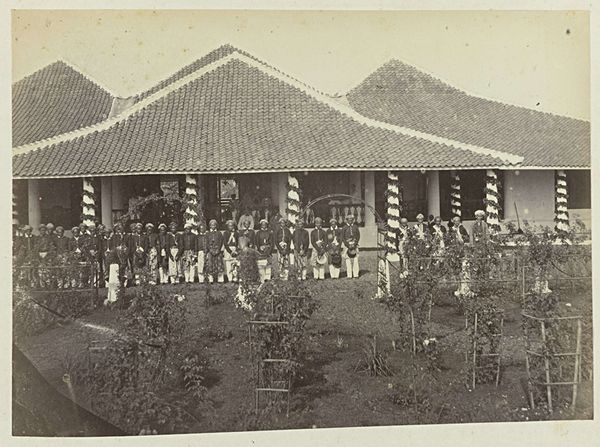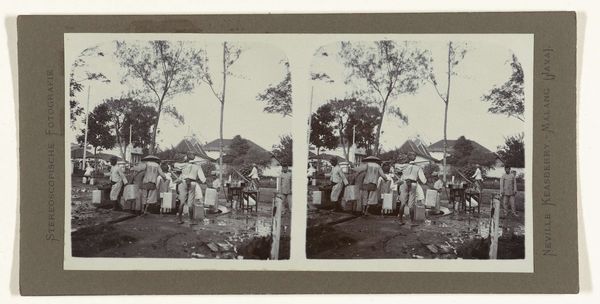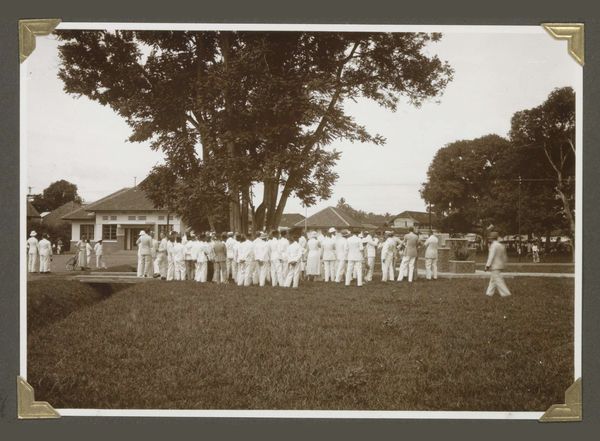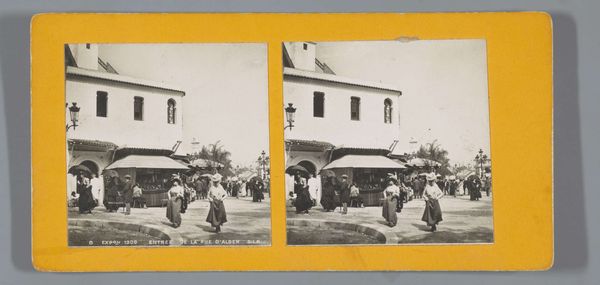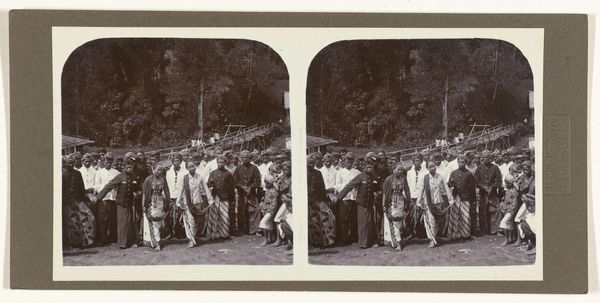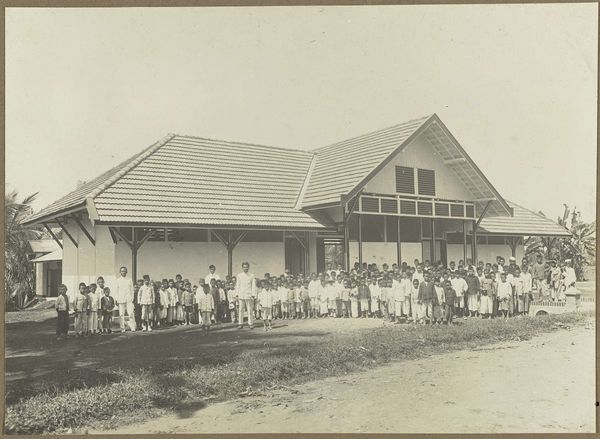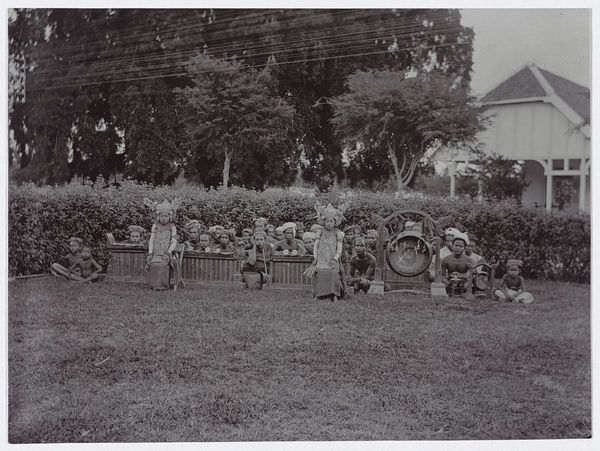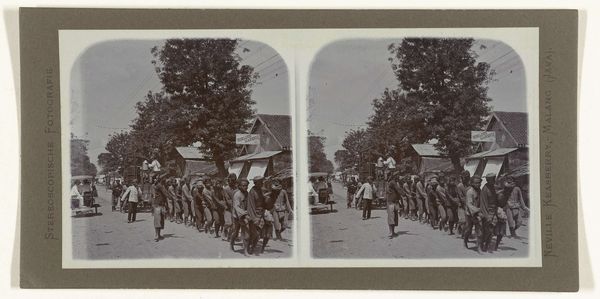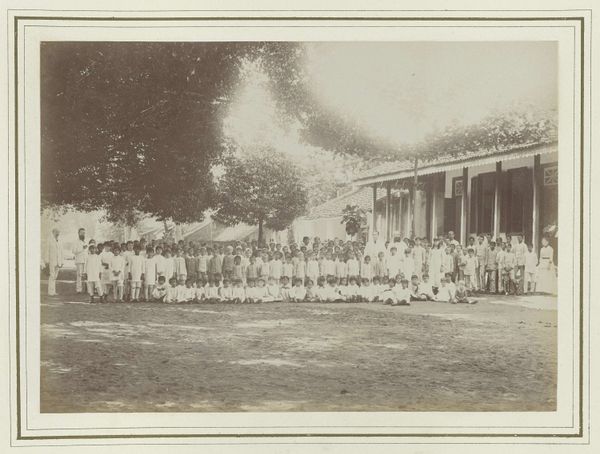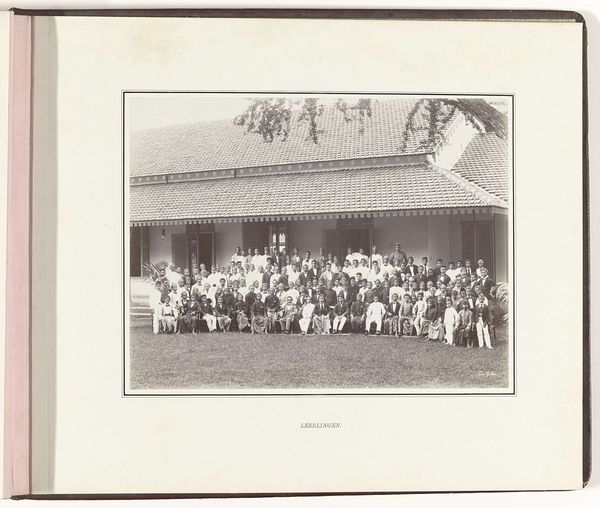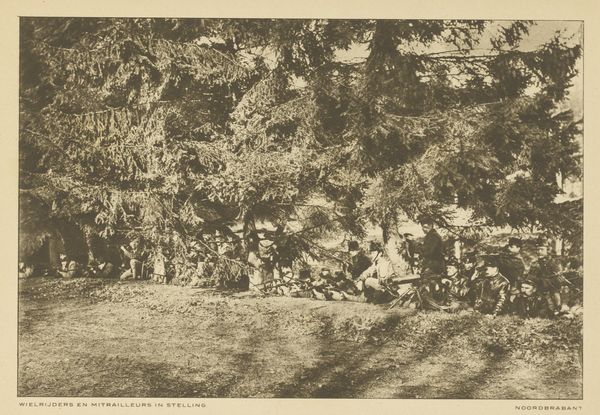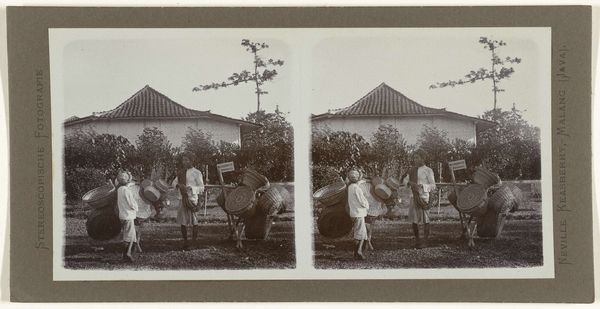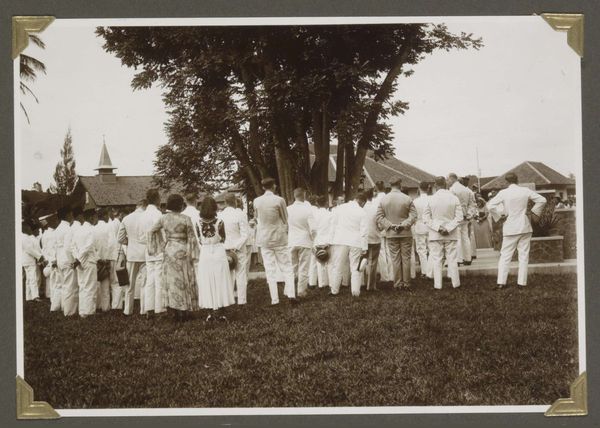
print, photography
# print
#
asian-art
#
street-photography
#
photography
#
orientalism
Dimensions: height 76 mm, width 152 mm
Copyright: Rijks Museum: Open Domain
Editor: This photograph, titled "Optocht tijdens het Chinese cap go meh," captured sometime between 1900 and 1935 by Neville Keasberry, shows a procession. It has a documentary feel to it, yet something about the subjects’ faces remains elusive. What do you see in this piece, beyond the immediately visible? Curator: This image, presented in a stereoscopic format that hints at a colonial gaze attempting to capture and ‘own’ the exotic other, isn't merely a documentation of a Cap Go Meh parade. The choice of staging and perspective becomes crucial. It evokes a time of unequal power dynamics between the colonizer and the colonized. The photographer's choice of subject indicates an exoticizing desire from a western perspective to show a "peculiar scene". What impact might this depiction have had on the local community portrayed and on the way Dutch colonial viewers perceived them? Editor: That's fascinating. I hadn't considered the potential imbalance of power inherent in the act of documenting another culture. So, the photograph serves not just as a record but as a statement, albeit a possibly problematic one? Curator: Precisely. Consider the implications of exhibiting this photograph, not as a neutral record but as evidence of how cultural narratives can be shaped, reinforced, and sometimes distorted. In that sense, even a seemingly objective piece of photography is intrinsically charged with ideological viewpoints. What is the responsibility of art institutions when presenting these images? Editor: I guess we need to provide a counter-narrative, contextualizing the work and prompting viewers to think critically about the colonial lens. I definitely see this photograph differently now. Thank you for providing me with some great food for thought. Curator: My pleasure. It is these critical dialogues that allow us to reassess art's function, making it both relevant and responsible.
Comments
No comments
Be the first to comment and join the conversation on the ultimate creative platform.
